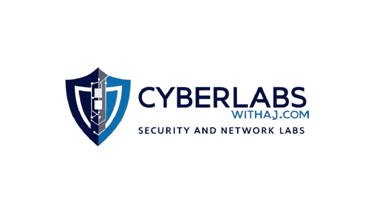🛠️ Top 5 Free Cybersecurity Tools Every Beginner Should Learn in 2025
Cybersecurity beginners often wonder where to start and what tools to learn. The good news? You don’t need to spend a penny to begin your practical journey. In 2025, these top 5 free tools are not just popular — they’re also widely used by professionals and organizations for hands-on learning, training, and even in real environments.


🛠️ Top 5 Free Cybersecurity Tools Every Beginner Should Learn in 2025
Whether you're into ethical hacking, blue teaming, or network defense — this list will guide your first steps.
1. Wireshark – The Network Detective
Wireshark is the most popular open-source packet analyzer. It helps you inspect network traffic in real-time, detect anomalies, and understand how protocols behave.
Analyze captured packets from Wi-Fi and LAN networks
Learn how attacks like ARP spoofing, DNS hijacking, or credential leaks happen
Practice packet-level forensics for blue team and red team scenarios
Perfect for: Network analysis, protocol learning, packet inspection
2. Nmap – The Ultimate Scanner
Nmap (Network Mapper) is your best friend for port scanning, OS detection, and vulnerability discovery. It’s lightweight, fast, and incredibly powerful for reconnaissance.
Scan networks to find open ports and live hosts
Use NSE scripts to find weak configurations and services
Combine it with Zenmap for a GUI experience
Perfect for: Reconnaissance, enumeration, vulnerability assessment
3. TryHackMe – Gamified Cyber Labs
TryHackMe provides hands-on labs for cybersecurity training — from absolute beginner to advanced levels. While there’s a premium plan, most foundational rooms are free and beginner-friendly.
Learn Linux basics, networking, web exploitation, and malware analysis
Earn badges and certificates to showcase on LinkedIn
Follow learning paths like “Complete Beginner,” “Blue Team,” or “SOC Analyst”
Perfect for: Practical learning, structured roadmap, certification prep
4. Autopsy – Digital Forensics Toolkit
Autopsy is a digital forensics platform used for file recovery, log analysis, and evidence handling. It's widely used in incident response and legal cyber investigations.
Analyze hard drives, USBs, or image files
Detect deleted files, browser history, registry entries
Use keyword search, timeline views, and hash analysis
Perfect for: Digital forensics, incident response, malware investigation
5. Wazuh – Open-Source SIEM for Detection & Monitoring
Wazuh is a free, enterprise-ready SIEM and XDR platform. It collects and analyzes logs, detects threats, and provides real-time monitoring capabilities — perfect to simulate a SOC environment at home.
Host-based intrusion detection
File integrity monitoring, rootkit detection, log correlation
Centralized dashboard and alerting
Perfect for: Home SOC lab, threat detection, blue teaming practice
How to Learn These Tools Effectively
Follow YouTube tutorials and TryHackMe rooms for guided labs
Join cybersecurity Discord servers and Reddit communities
Document your labs and share them on GitHub or LinkedIn
Practice daily — repetition builds confidence and skill
Final Thoughts
Starting with free tools doesn’t mean you’re limited — it means you’re smart. These tools are used by professionals around the world and form the foundation of many careers. In 2025, hands-on skills matter more than ever.
So pick one tool today, set up your lab, and start learning by doing.
